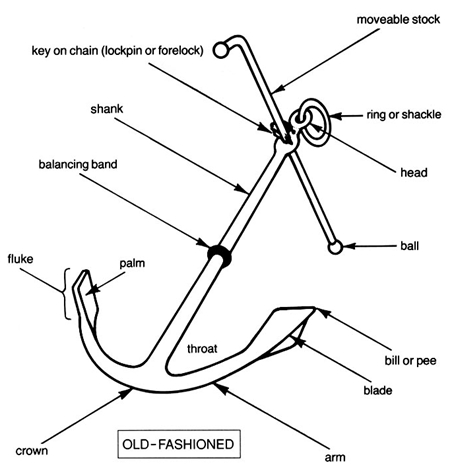Nomad Willy
Guru
Chip it looks like you're scar'in those poor dogs half to death.
The ABS connection makes it really funny.
GOOD one Chip.
The ABS connection makes it really funny.
GOOD one Chip.
A Forteress would be a fine hurricane anchor
David: Do you have 2 chain lockers on your boat? I keep my spare (Danforth) in the starboard locker with line attached. If I had to, I could deploy the spare by hand with the use of the capstan on the windlass. This is very comforting when you consider all the anchoring I do.
We have a Fortress on our sailboat as primary and it is amazing in the muddy bottom around here. We've had five boats rafted on it with a good breeze and no dragging (in fact, it set so well that getting it back up is another story). That said, it doesn't reset well when the tides/wind change. With no windlass on the boat and given our bottom type, it made a lot of sense for us. The reset issue hasn't been too bad, but we do keep an eye on it (set alarm to check anchor around time when tide changes). All that said, we would probably go with a different anchor were we in an area with grassy, rocky or coral bottom. The Tug came with a Delta, which we like, but is not as good in the mud. The Tug also has a Fortress backup.
Speaking of pics, It sure would be great if you could post more of them. You have one of the best looking 32's I have ever seen and it's a Euro, which I covet.Since this pic was taken, there is now a roller on the anchor platform in line with the bitt for the Fortress rode or our mooring pennant.
That's a great question! For myself, knowing very little about what makes a great anchor, I tend to go with the tests that I see at boat shows and on the Internet. There's good advice here, too, but keeping the OP's question in mind, sometimes it's a real problem trying to confirm/deny the advice.Is all this it good local knowledge, or stubborn traditional mindset?

Since just about the only complaint about Fortress anchors is its ability to reset if the wind changes, I would have thought differently.
The bending of the Fortress occurs under really strong pulls. In "normal" service as a primary anchor this would not be a problem.
Marin I disagree w you about the claw

Speaking of pics, It sure would be great if you could post more of them. You have one of the best looking 32's I have ever seen and it's a Euro, which I covet.


 Oh, Oh, Walt, Walt .... I didn't know you cared. Why don't you come up (er, down, er, downeast) sometime and see me? Signed: "Emily Anne".
Oh, Oh, Walt, Walt .... I didn't know you cared. Why don't you come up (er, down, er, downeast) sometime and see me? Signed: "Emily Anne". "The Fortress set so deep that the rode had to be hauled in to 1:1 and significant power applied to rode by the 83,000-pound tug to break it free. It is doubtful that a sailboat would have windlass power to break it out. Perhaps large primary winches or a rising tide might be adequate. However, it is also doubtful that a sailboat could have set the anchor that deep in less than a full hurricane."
This test offered proof that if a Fortress anchor is properly set and buried, then it is not coming out of a sea bottom no matter which direction it is being pulled.
"Made in the USA"
Come on, David! The ice hasn't even melted in your neck of the woods yet and besides what else do you have to do? Meanwhile, most of us are ===>
This is my storm anchor. Luke? Navy? Herreshoff? It apparently has many names.
TBH... I doubt I will use it. I prefer to either be on the hard or in a marina during storms.

Andy, no.6 Super Sarca, in gal. On displacement, loaded, we were between a 5 and a 6 size, so went for the heavier 22kg one, though it was a big jump in size and price, much greater than from no.4 to 5.Bruce, which Sarca did you get?
